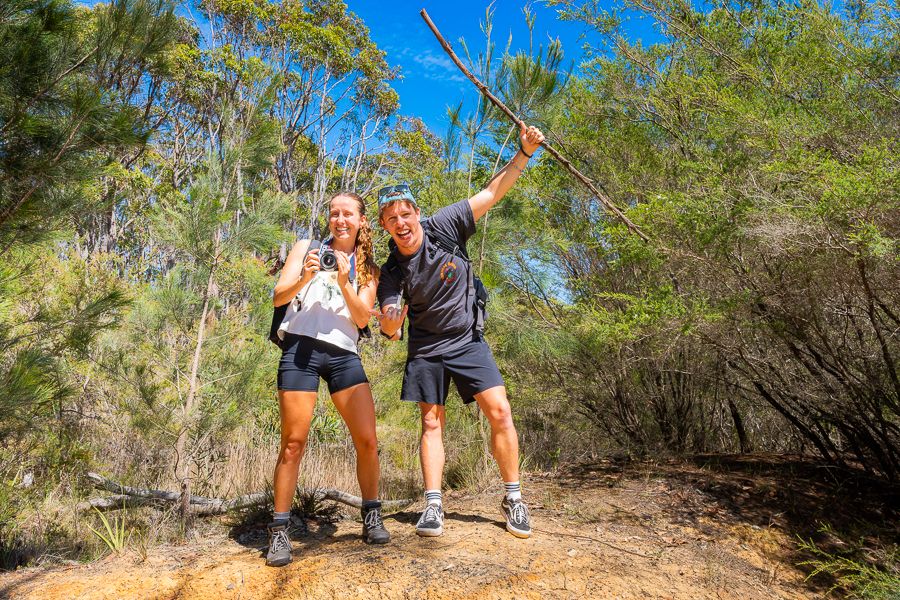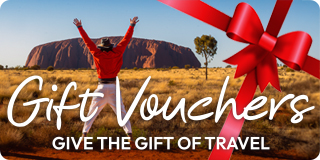When Is The Best Time To Visit Outback Australia?
If you’re planning your first visit to the Australian Outback, be sure to time your visit wisely. The region, which takes up 70% of Australia, is beautiful all year round, but can be subject to some pretty extreme temperatures and weather conditions. Heading to the Outback at the wrong time of year can make for a rather uncomfortable and even dangerous trip. Time your Outback tour during Australian winter and you’ll be able to enjoy this stunning natural landscape in comfort.

Where is the Outback, Australia?
The Outback is the vast inland area of Australia that is remote from larger population groups and often totally uninhabited. It stretches all the way from the Northern Territory to South Australia and is so vast that it extends through three different climate zones.
To get to the Outback, visitors typically either fly to Uluru airport, or embark on a lengthy road trip via the Outback Way.
Explore more of Australia's Outback!

What are the seasons in the Australian Outback?
Unlike coastal Australia - and the rest of the world, for that matter - the Outback only really has two seasons: summer and winter. They can also be characterised as wet season and dry season.

Dry Season in the Outback
Dry season, or winter, in the Outback typically lasts from May to October. This is the most popular time of year to visit, promising safer, more pleasant weather conditions and clearer skies. It’s the perfect time to explore Uluru or embark on a hike. Not only that but you can expect to see a lot more wildlife during this time of year as the creatures of the Outback roam further for water.
That being said, its optimal conditions make dry season a busy period for tourists passing through the Outback. That means the top attractions could be busy and accommodation could be a little pricier, so be sure to plan your visit in advance.

Wet Season in the Outback
Wet season, or summer, in the Outback spans from November to April. On one hand, it’s an excellent time of year for the landscape, as flora thrive from the rainfall and the famous dusty red Outback backdrop turns lush and green. Waterfalls flow, and wildflowers are in full bloom, and the local communities have more space to breathe with fewer tourists passing through.
However, this time of year is quieter for a reason. In certain parts of the Outback - particularly the parts that lie within the arid climate zone - experience extreme heat. Daytime temperatures can skyrocket to 40°C and beyond, and the intense humidity can make things even more uncomfortable. Plus, heavy rainfall can make popular Outback attractions difficult to reach, and even cause flooding. While these conditions aren’t exactly optimal for us humans, they are, unfortunately, perfect for mosquitoes. If you’re set on heading to the Outback during this time of year, make sure you bring enough bug spray to keep the pests at bay.

What Climate Zones are in the Outback?
The Outback of Australia is so vast that there are several climate zones within it. There’s the tropical zone, the arid zone, and the semi-arid zone. Each has its own seasonal conditions and optimal visiting times. Here’s a little breakdown of them:

Arid Zone
The Arid Zone is probably what comes to mind when you think of the Aussie Outback, including iconic destinations like Uluru and Alice Springs.
Weather Conditions in the Arid Zone
The Arid Zone can be identified by its sweltering hot summers and cooler winters. At nightfall in winter, conditions can be exceptionally cold, though.Rainfall here is sparse and unpredictable, with an average of just 250mm of rainfall per year.
Best Time to Visit the Arid Zone
Australia’s cooler months, from April to October, are the best times to visit - with July being the coldest month in the Outback. During the day, temperatures will be more bearable, and flies will be less of a nuisance. Daytime temperatures are a lot more manageable, making outdoor exploration more comfortable. But be sure to bring extra layers to wear at night, because we’re not exaggerating when we say it can get freezing cold!

Semi-Arid Zone
The Semi-Arid Zone is the more southern end of the Outback. It includes western parts of New South Wales, Southwest Queensland, and parts of South and West Australia.
Weather Conditions in the Semi-Arid Zone
This part of the Outback still boasts scorching hot summers, followed by pleasant and mild winters that won’t leave you too chilly. Summers can be scorching, while winters are mild and pleasant. There is still a minimal amount of rainfall - just slightly more than what you’d experience in an Arid Zone.
Best Time to Visit the Semi-Arid Zone
Visiting the Semi-Arid Zone of the Outback is best between September and November or between March and May. During these months, you’ll be able to explore to your heart’s content without being too put off by the climate’s more extreme conditions. Plus, you might be lucky enough to spy some beautiful wildflowers during these milder months.

Tropical Zone
You’ll be within the Tropical Zone of the Outback if you’re visiting the Top End of the Northern Territory, Far North Queensland, or the Kimberly region of Western Australia.
Weather Conditions in the Tropical Zone
The Tropical Zone experiences a lot more rainfall than the other climate zones within the Outback. As a result, it has quite distinct wet and dry seasons. Expect heavy rainfall and intense humidity during the wet season, from November to April, and warm, dry conditions during the dry season, from May to October.
Best Time to Visit the Tropical Zone
It’s best to pay a visit to the Tropical Zone of the Outback during its dry season from May to October. During these months you’ll enjoy more pleasant, comfortable weather conditions, fewer pesky flies, and better road conditions.

When is the best time to visit the Outback?
Of course, you can visit the Outback at any time of year. But with all of the above considered, the best time of year to visit the Australian Outback is between May and September. Enjoy mild, warm days and cool nights, avoid the mozzies, get easy access to attractions and keep the perspiration to a minimum while you explore the famous region.
Whenever you decide to visit, the Outback promises an extraordinary experience, and memories of glorious, vast landscapes, unique flora and fauna, and indigenous cultures and history that’ll last a lifetime.

See the Red Centre, Uluru and Kata Tjuta on the Hop On Hop Off bus!
For a trip to the Outback, planning ahead is key.












